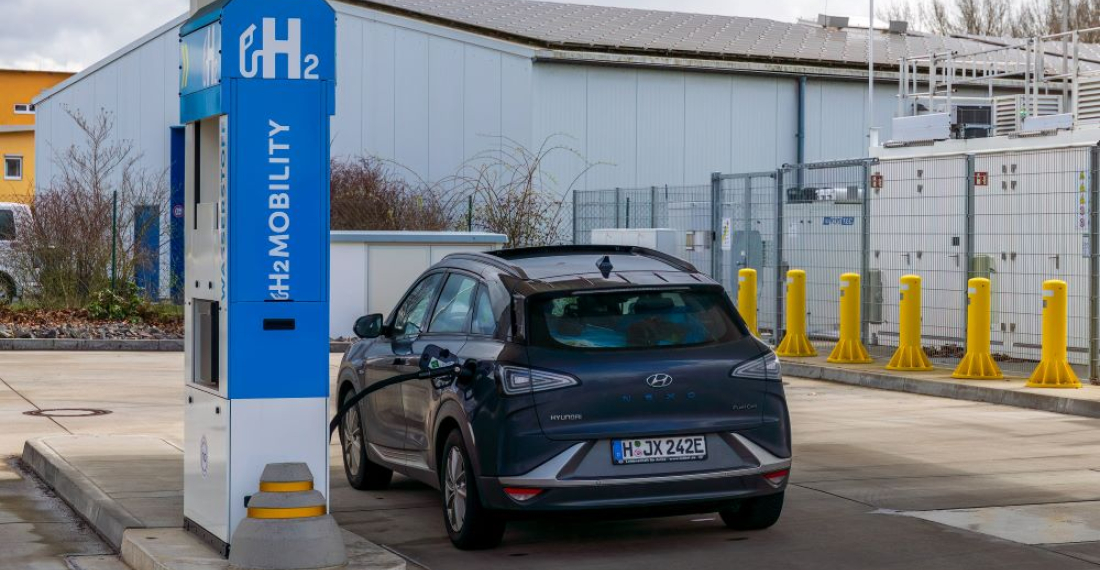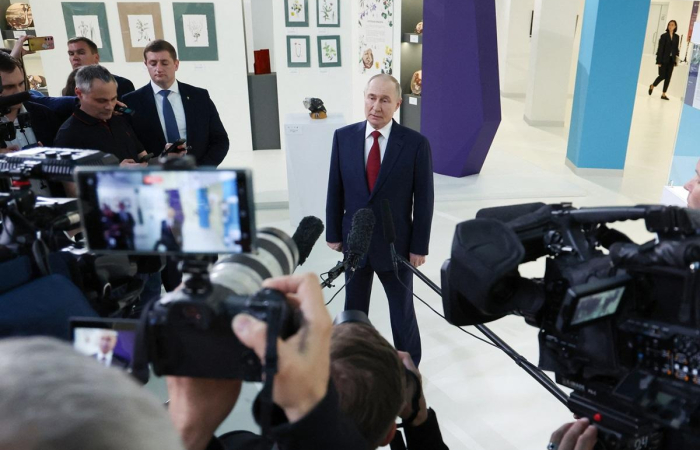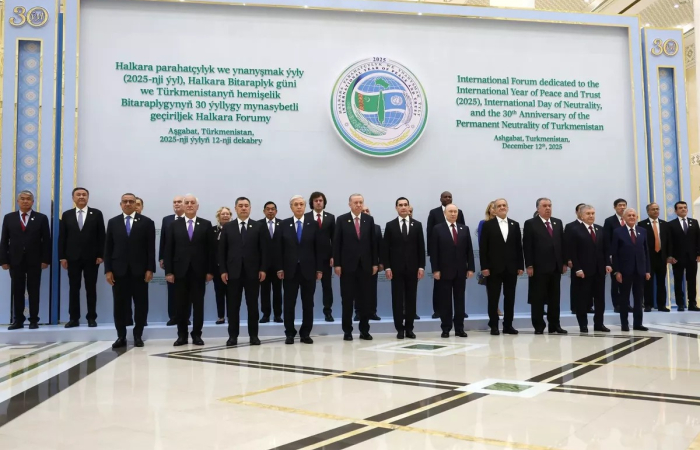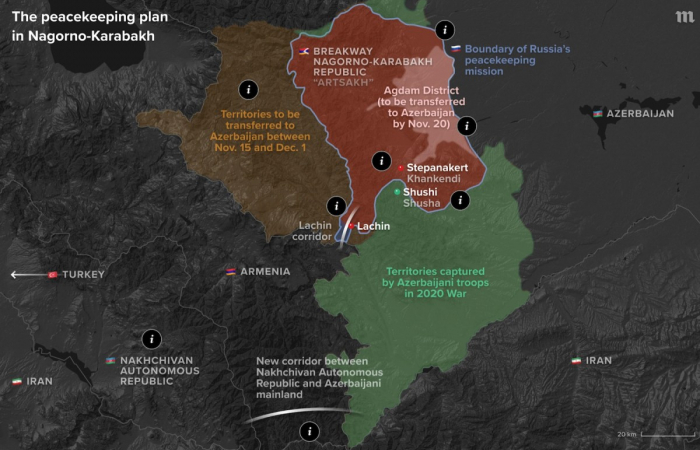Algeria, Tunisia, Austria, Germany and Italy have agreed to construct a hydrogen pipeline to bring clean fuel generated with renewable energy in North Africa to the European Union, in a move hailed as one of the bloc’s “most important renewable energy projects”. But analysis of Algeria and Tunisia’s green hydrogen strategies reveals that neither country is likely to be in a position to export the fuel in any meaningful quantity when the pipeline is due to start operating in 2030.
Experts told Climate Home News that despite the hydrogen hype, there are serious challenges for North Africa to become a major exporter of green hydrogen to the EU by 2030. Some question whether the pipeline should be developed at all.
In January, ministers from each country along with Tunisia’s ambassador to Italy met in Rome where they confirmed their intentions to build the SoutH2 Corridor. The first-of-its kind hydrogen pipeline, 3,500-4,000 kilometres long, would run under the Mediterranean Sea. It aims to connect hydrogen production centres in Algeria and Tunisia – which have yet to be built – to the Italian island of Sicily and consumer hubs in Austria and Germany by repurposing existing gas infrastructure along 65 per cent of the route.
The corridor “is crucial for the development of an interconnected and diversified hydrogen backbone” in the EU, the consortium of European and Algerian companies developing the project says on its website. The EU is betting on importing large amounts of green hydrogen to wean highly polluting sectors and hard-to-electrify industries such as steel production, fertilisers and long-distance transport of climate-wrecking fossil fuels.
With its abundant sunshine, vast renewable energy potential and relative proximity to Europe, EU officials hope to tap into North Africa’s resources and secure green hydrogen supplies. “The Southern Hydrogen Corridor is one of the largest and most important renewable energy projects of our time,” Philipp Nimmermann, Germany’s State Secretary for the Ministry for Economic Affairs and Climate Action, said in a statement. “We can use North Africa’s immense potential for renewable energies, advance the hydrogen ramp-up in Germany and support the EU’s climate targets,” he added.
According to the project consortium, the pipeline, when fully operational, could deliver more than 40 per cent of the EU’s target to import 10 million tonnes of green hydrogen by 2030. But Algeria and Tunisia anticipate large-scale green hydrogen production to be at least a decade away, calling into question plans for exports in the next five years.
Adrian Odenweller, a researcher at the Potsdam Institute for Climate Impact Research (PIK), told Climate Home that the EU should “certainly not count on the delivery” of green hydrogen from Algeria and Tunisia any time soon. Odenweller said he does “not expect to see any hydrogen imports via [the SoutH2 Corridor] by the year 2030” and urged policy makers to interpret project announcements “with caution”. “Green hydrogen production projects have a poor track record and often get delayed. I would expect this to be even worse for massive infrastructure projects such as pipelines that require international coordination,” he said.
Green hydrogen is produced by splitting water into hydrogen and oxygen using renewable electricity – as opposed to blue or grey hydrogen, which uses gas. But transporting green hydrogen is a logistical challenge. Channelling it in a gaseous form through a pipeline is generally cheaper and more efficient that liquefying it to transport it on ships but requires relative proximity to where the fuel is consumed.
Algeria and Tunisia do not currently produce green hydrogen. Algeria – a top gas exporter – and Tunisia generate nearly all of their electricity from gas. The share of solar power in electricity generation is growing but accounted for less than 1 per cent in Algeria in 2023 and 4 per cent in Tunisia the same year, according to BloombergNEF data.
Over the last two years, both countries have released green hydrogen strategies. But neither country foresees large-scale hydrogen production until the mid-2030s. By 2030, the SouthH2 Corridor will have capacity to import 4 million tonnes of hydrogen per year into the EU. But Algeria and Tunisia expect to have combined capacity to export around 330,000 tonnes of hydrogen – or 8 per cent of the pipeline’s capacity – by then.
According to data from the International Energy Agency (IEA), less than 1 per cent of the 97 million tonnes of hydrogen produced globally in 2023 was green or “low emissions” hydrogen.
Growth in the sector has been slow, with many projects struggling to move beyond very early stages of development. The IEA recently found that investments in electrolysers and green hydrogen have lagged because of uncertainty over costs, demand and regulatory frameworks.
Abdurahman Alsulaiman, from the Oxford Institute for Energy Studies, argued that the EU’s hydrogen import target is “highly ambitious” but underpinned by a sound political calculation. “As more details about financial support, trade economics, and standardisation become available to investors, the target will become more of a reality rather than just an ambition,” he told Climate Home. It is also placing “urgency “ on potential production hubs such as North Africa even though “the economics of the green hydrogen trade are still at a very nascent stage”, he added.
But others have questioned whether Algeria and Tunisia should use clean electricity to produce hydrogen for export rather than to meet their own energy needs. “Instead of planning to export green hydrogen to Europe, North African countries should focus on using domestically produced hydrogen to decarbonise their own high energy-intensive industries or increasing their share of renewables in power generation,” Ana Maria Jaller-Makarewicz, of the Institute for Energy Economics and Financial Analysis, told Climate Home.
Tunisia already struggles with energy shortages and is dependent on gas and electricity imports from Algeria to meet its growing electricity needs, said Saber Ammar, a Tunisian researcher at the Amsterdam-based Transnational Institute think-tank.
The EU is pushing for a green hydrogen economy because “they dominate the [hydrogen] value chains and technologies” and can outsource all “the socio-environmental costs to the peripheries”, he said. Using scarce renewable electricity and even scarcer water resources to produce green hydrogen for Europe “is not only a paradoxical and foolish investment but it also underscores the political hegemony at play”, he added.
Drought-stricken Tunisia and Algeria are already experiencing water shortages and climate change is likely to exacerbate water scarcity in the region.






